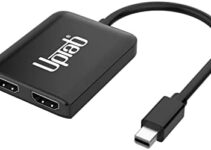Many African nations are starting to invest in electric vehicle (EV) transportation as a means to broaden access and help keep pace with global environmental initiatives. In Kenya, strides are being made despite industry and tech leaders grappling to overcome early challenges.
Uptake in EVs is quietly accelerating across Africa’s transport systems. During the last year alone, for instance, companies such as BasiGo and Roam in Kenya have launched in various cities. And a Brookings report titled, Accelerating adoption of electric vehicles for sustainable transport in Nairobi, called on local and national governments to promote investment in key infrastructure to support public charging and servicing points; enhance the reliability of supply and distribution of electricity through last-mile power connectivity; increase financing for local electric mobility startups; and provide policy and tax incentives to realize a boom in electrical transportation.
But EV uptake is still in its infancy as its percentage among total numbers of new car sales, for example, barely register. In Kenya specifically, there are estimations of only 350 EVs of the country’s 2.2 million registered automobiles. South Africa had EV sales of 502 units in 2022, while Tanzania is reportedly leading the pack with 5,000 EVs in total.
Being in the early years of electric transportation in the continent, IT leaders are still working through the rudimentary challenges of inadequate infrastructure to charge EVs.
“The greatest technical challenge is the deployment of charging infrastructure in a way that makes electric buses as convenient for operators to use as current diesel buses,” says Jit Bhattacharya, CEO and CTO of BasiGo (pictured).
BasiGo has 15 electric buses operating on four additional routes in Nairobi. This is after it launched in March 2022, with two electric buses. According to Bhattacharya, the two buses have now driven approximately 200,000km, completing over 260,000 passenger journeys.
“Charging infrastructure needs to be located along operator routes, adjacent to reliable, high-voltage power lines, and with adequate space for bus parking,” he says. “Finding the locations and developing charging sites is one of the most critical aspects of our business and one of the key technical challenges to making e-buses work in the market.”
BasiGo is now operating three charging sites across Nairobi with a capacity to charge 18 electric buses. These sites are developed in close partnership with Kenya Power to ensure compatibility with the grid.
The Kenya Electricity Generating Company (KenGen), which is a producer of electricity announced its plans to roll out 30 EV charging stations throughout 2023. In addition, it bought its first four EVs to demonstrate its commitment.
The expensive upfront costs
According to Bhattacharya, the upfront cost of acquiring EVs is a disadvantage compared to acquiring fossil fuel buses.
“A big technological challenge with electric buses in particular is the upfront cost is more expensive than a diesel-powered bus, even though operating costs like fuel and service are significantly lower than a diesel bus,” says Bhattacharya. “But the initial cost is still a barrier to the adoption of the technology.”
To counter this challenge, the company has devised a pay-as-you-drive financing model, whereby operators can get access to an e-bus at the same upfront cost as a diesel bus.
Acquiring batteries for smoother rides
Batteries are essentially the fuel for e-buses, and without adequate access to charging points, it can be catastrophic if charges run out on the job. Luckily, according to Bhattacharya, the cost of lithium-ion batteries has declined by over 90% over the last 14 years, according to the US Department of Energy, while the density and life of these batteries have also improved dramatically.
“BasiGo currently sources buses and batteries from BYD, the largest manufacturer of EVs in the world and one of the largest manufacturers of EV batteries,” says Bhattacharya.
BYD is also a leader in lithium-iron-phosphate battery technology, one of the safest and most reliable EV battery technologies available. BasiGo currently offers the BYD K6 model of electric bus, with 25-seat capacity and 250km of driving range on a single charge.
Meanwhile, Swedish-Kenyan electric vehicle firm Roam launched its assembly plant in March 2023, and expects to assemble up to 50,000 e-motorcycles per year in the medium term. The facility will also house a battery and development lab.
The upside to the EV market in Kenya
Being a producer of green energy through hydroelectric dams and geothermal wells, Kenya is fit to power the revolution of e-transport. The government’s commitment through KenGen is not only encouraging but sets a precedent for more innovation to occur around EVs.
As a major operator in this space, BasiGo is convinced of the benefits ahead of changing to an electrified mode of transport.
“The e-mobility industry is a clear win for Kenya, something that the government fully understands and seems ready to support,” says Bhattacharya. “E-mobility reduces the use of foreign currency reserves on imports of transportation fuel while increasing the purchase of domestically generated renewable electricity. It also advances the country toward our greenhouse gas reduction targets while reducing air pollution in our cities.”
He advises the government to go above and beyond its commitment to EVs and extend tax incentives that would bring down the cost of acquiring and operating public transport EVs. Such measures would include extending the same benefits currently provided to diesel-powered buses, like subsidies for diesel fuel to buses powered by domestically generated electricity.
BasiGo also intends to assemble its buses locally by the end of 2023. Currently, assembly is partially done in partnership with the Associated Vehicle Assemblers (AVA) in Mombasa, Kenya.
Bhattacharya also highlights that locally assembled vehicles receive significant import tax exemptions in Kenya. So for that reason, it’s critical for electric buses to compete against the current supply chain of locally assembled diesel buses.
Related content
-
feature
MoneyGram profits from mainframe move to multicloud
To stave off digital upstarts and capitalize on opportunities enabled by the cloud, the international money transfer company’s digital transformation is paying dividends and opening up new lines of revenue.
By Paula Rooney
Jun 16, 2023
8 minsFinancial Services Industry
Multi Cloud
Digital Transformation -
feature
8 famous analytics and AI disasters
Insights from data and machine learning algorithms can be invaluable, but mistakes can cost you reputation, revenue, or even lives. These high-profile analytics and AI blunders illustrate what can go wrong.
By Thor Olavsrud
Jun 16, 2023
12 minsTechnology Industry
Machine Learning
Artificial Intelligence -
brandpost
4 steps for building a new DEX strategy
Hybrid work has become the norm, making the digital employee experience (DEX) a key value driver for most businesses. Here are four steps they can follow to update their DEX strategy and solve many of their hybrid work challenges.
By Carol Venezia
Jun 15, 2023
8 minsDigital Transformation
-
case study
Examining Mr Price Group’s search to modernize
As CIO of South African fashion-value retailer Mr Price Group, Kim Sim has to keep up with emerging tools and technologies so a decades-old business can modernize operations.
By Joanne Carew
Jun 15, 2023
6 minsCIO
E-commerce Services
Change Management
SUBSCRIBE TO OUR NEWSLETTER
From our editors straight to your inbox
Get started by entering your email address below.
Please enter a valid email address


